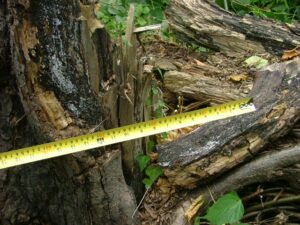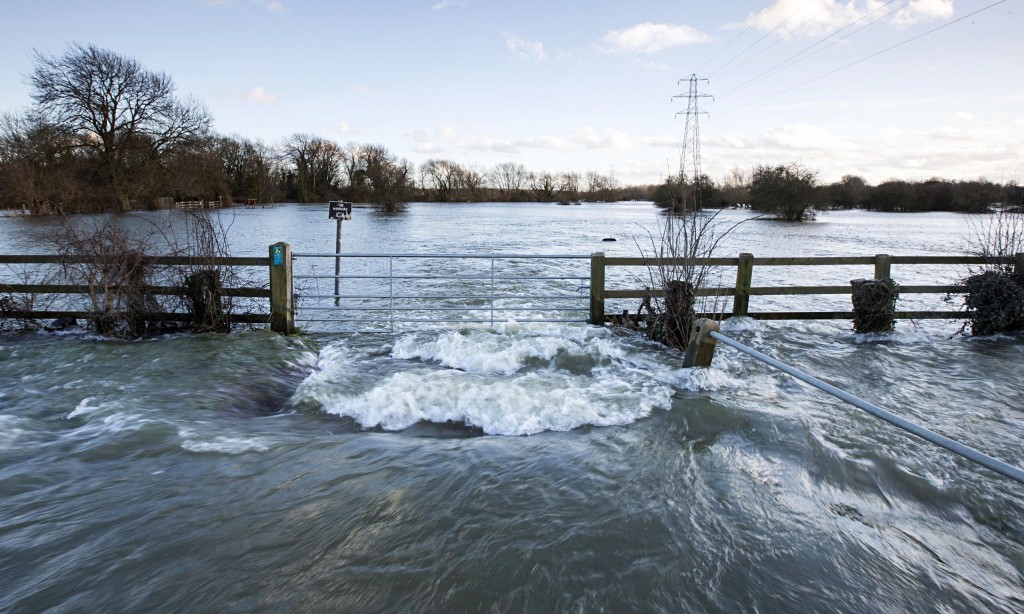Fungi are one of the most amazing diverse organisms on the planet. They take many forms from slimes and toadstools to rusts and mildews. They can colonise some of the most inhospitable environments and cause diseases in plants, animals, insects and micro-organisms resulting in ill health, decline and eventual demise of the host.
Fungi provide a wide range of benefits that include:
- Decomposing organic matter that releases nutrients back into their environment which otherwise would remain unavailable for plant growth
- Being a food source for plants and animals
- Being the basis of many antibiotics used for human and animal health
- Producing useful by-products used in the manufacture of food and beverages
- Forming symbiotic relationships with plants increasing their ability to absorb water and minerals
- Provide a degree of protection against the colonisation by aggressive pathogenic species.
- Decomposing the non structural internal vessels of trees, making the structure lighter and less likely to fail
They are unable to produce their own food as plants do through photosynthesis, but absorb essential nutrients and moisture from their surroundings. They are possibly one of the largest organisms on the planet as strands of fungal cells (hyphae) can occupy huge volumes of soil over large areas.
Fungi can be either:parasitic – colonising and living off a living host with no benefit to the host, saprophytic – colonising and degrading dead organic matter, or symbiotic where both the host and fungi exist with mutual benefit, such as mycorrhizea (root fungi) which obtain carbohydrates from the tree whilst improving roots ability to absorb water and mineral nutrients.
Unfortunately fungi can also be responsible for the degradation of load bearing structures resulting in their weakening, partial failure or complete collapse. In respect of trees, this degradation in strength can result in damage to property or injury or death of people.

Large cavity in decay resistant species – not significant to safety
Significant decay can occur in all parts of a tree’s structure including the roots, rootplate, trunk, main and smaller branches. Soft wood, holes (cavities), dead bark, growth deformations and declining health could indicate fungal colonisation which requires further investigation. Fungal fruiting bodies (brackets, toadstools or fronds) together with other indicators such as mycelium, rhyzomorhs, weeping spots and fungal crusts may or may not be readily visible to aid identification.
There are several ways in which fungi can colonise trees:
- There are fresh wound parasites whose spores colonise wounds caused by incorrect pruning works, storm, malicious or accidental damage.
- Heartwood colonisers primarily decay the dysfunctional and heavily lignified vessels deep within a tree gaining access through large wounds which expose heartwood or by the death of large roots below ground level.
- A few species such as Honey Fungus (Armillaria sp.) and Conifer Butt Rot (Heterobasidion sp.) have the capacity to attack healthy uninjured plants by excreting chemicals which kill living bark forming their own entry point. They often colonise adjacent plants though root grafts resulting in groups of plants becoming decayed or dying.
- Finally there are latent fungi which are present in the tree as dormant cells from germination. These cells remain dormant as long as the tree remains healthy and fully hydrated as this excludes oxygen from the internal vessels. If tree heath declines or it is significantly damaged, oxygen enters the vessels allowing the fungal cells become active, resulting in wide spread decay. The Birch Polypore (Piptoporous betulinus) is an example of such a colonisation strategy.
Fungal fruit bodies (spore bearing structures) can take many forms. Some are large and clearly identifiable such as Giant Polypore meriplilus giganteus or Hen of the Woods Grifola frondo. Others produce inconspicuous fruit bodies that blend in with their environment or develop in small cracks and crevices or under small areas of loose bark. These can be difficult to identify to the untrained eye or can be easily hidden by vegetation.

Young small fruiting bodies: Meripilus gigantea
Fruiting bodies can be produced annually (forming and degrading in less than one season) such as Honey fungus Armillaria mellea. Others fungi produce hard or semi hard perennial (lasting from 1 year to the next) fruit bodies. Examples of these include Ganaderma sp. and Rigidoporus ulmarius. The colour shape and size of fruiting bodies can vary considerably depending on their age, form and environment. Making a positive identification can be difficult if not impossible where poorly preserved specimens are presented out of context or with little additional information.

An easily overlooked pathogen: Kretzschymaria deustra
There is a complex interaction between the pathogen and host that determines the speed of colonisation, decay development and degradation of wood constituents. The wood of host trees varies enormously even between different species of the same genera. Wood can range from dense, heavily lignified and decay resistant wood fibres (e.g. Oak, London Plane) to that of fast growing species that develop large amounts of poor quality, easily decayed wood (e.g. Poplar, Horse Chestnut). If trees are otherwise healthy, the decay may be contained (compartmentalised) within a small proportion of the tree part
which continues to grow and encapsulates it. The tree may be able to add sufficient growth so as to compensate for the loss of internal wood and be at no greater risk of failing than any other similar tree without decay. Trees with small crowns (a reduced sail area) or that sheltered by others may be at less risk of collapse than those with large spreading crowns or positioned in exposed or recently exposed locations.
Where decay is suspected, a competent, qualified and experienced Arboriculturalist should assess it. The extent of any examination will depend on the careful assessment of the environment, the value of the tree, the land use around the tree, the type and location of the decay; the age, size, exposure and health of the host. It may require the use of specialist decay detection equipment such as micro drills or sound wave measurements to accurately determine how much un-decayed wood remains in relation to the diameter of the tree part. This is essential, as the correct identification of the pathogen together with knowledge of the host and its environment is required to determine if the tree is acceptably safe. If the tree is found to have a high risk of failure a good Arboriculturalist will, where possible, recommend pruning to achieve an acceptable margin of safety rather than felling the tree in its entirety.
Do you have concerns about any of your trees? Why not contact Tree Maintenance Ltd. and arrange for one of our experienced tree consultants to help you choose the best course of action.








